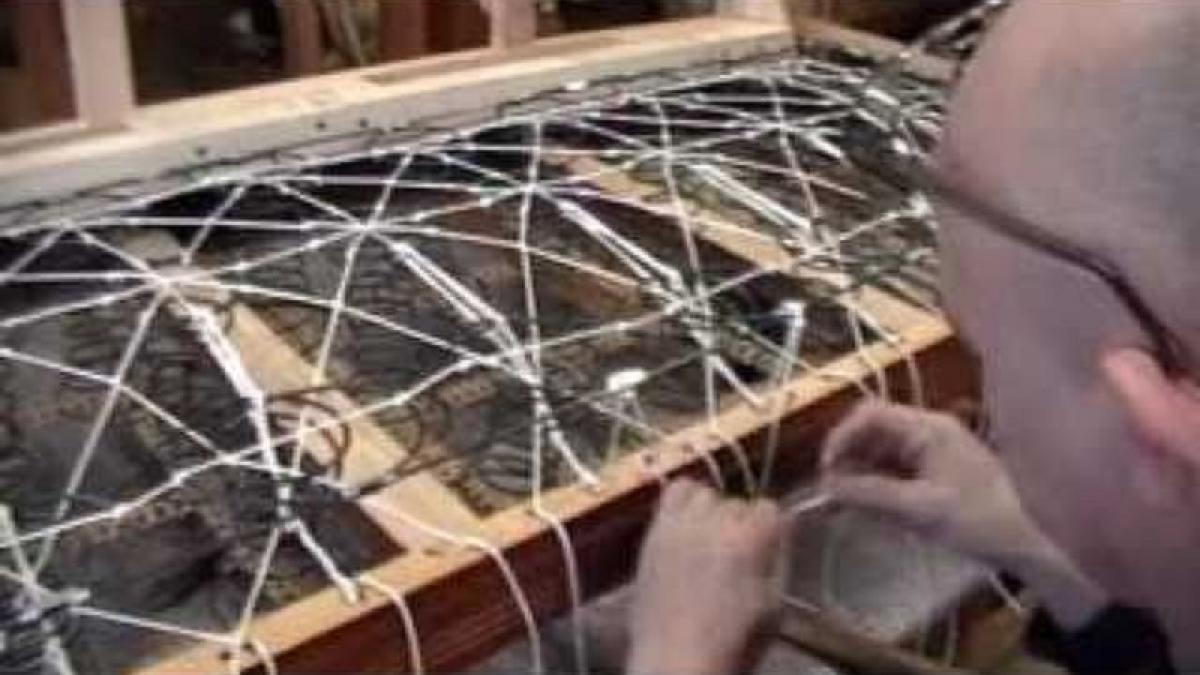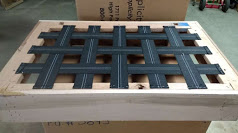What is the best type of foundation for sofas?

Customer Question
I have been looking at expensive sofas. The one I like best has a foundation made with Pirelli webbing.
An interior designer I spoke with told me that webbing is terrible and will sag over time. She insisted that 8 way hand tied is the only type of foundation used in top quality furniture.
Is she correct?
Your interior designer is incorrect, but it is an understandable mistake.
- The webbing used on lower priced seating (and on some not-so-cheap budget leather sofas) is stretchable. This makes it far quicker and easier to install than stronger non-stretch webbing. The problem is that stretchable webbing will eventually sag. (It will sag sooner when frequently used by larger than average people or jumping kids.)
- Webbing found on high quality seating, does not stretch. It is wider and thicker. When properly installed it should last just as long or longer than 8 way hand tied foundations that cost hundreds of dollars more.
- The advantage of 8 way hand tied foundations is increased comfort, especially when used with thin cushions or soft non-resilient fillings such as down/feathers.
- The difference in comfort is far less noticeable when used with thick high density foam or coil spring cushion construction.
Until the past decade, top quality traditional style furniture was often defined by the use of 8 way hand tied foundations.
Expensive modern style furniture has rarely used 8 way hand tied springs. Streamlined modern frame styles usually do not have enough space below the seat to accomodate bulky 8 way spring units.
Over the past decade, consumer preferences have shifted dramatically from traditional to modern styling for upholstered furniture.
High quality webbing is often found in high end modern style sofas. It is superior to sinuous springs, the next most common type of foundation found in modern style, high end seating.
Lower quality webbing looks very similar to the high quality version. The difference is in both the physical properties of the webbing and the method of installation.
- Lower quality webbing stretches. You can pull on it and it gets longer. This makes it far easier to install (requiring far less physical strength) than the stronger, more expensive non-stretch webbing.
- Lower quality furniture is more likely to use engineered wood products for their frames. Staples loosen and pull out of engineered wood much more easily than from solid hardwoods or furniture grade plywood.
- Manufacturers that use lower quality webbing also tend to use less of it. There are usually fewer strands running front to back and side to side.
- Lower quality stretchable webbing is far more likely to fray at the edges and eventually break, especially when there are there is too much space between the individual strands.
High quality webbing may look almost identical in a photo. But it does not stretch, is far stronger and built to hold up for 20+ years without sagging.
- High quality webbing requires far more strength and skill to install than the cheaper stuff.

8 way hand-tied foundations are by far the most expensive type of foundation used in upholstered furniture. This construction has been used since 1850.
This is, by far, the most comfortable foundation for use in traditional style furniture with thin, soft cushions, including those made with straw, horsehair or feathers. It loses much of its comfort advantage when paired with thick high density foam or spring down cushions.
- Installation of a genuine 8 way hand-tied foundation requires a highly skilled and experienced craftsperson.
- Many of the skilled craftspeople who build custom sofas using 8 way hand tied foundations are getting close to retirement age. New apprentice upholsterers are extremely reluctant to take the time and effort needed to master this difficult and dying art.
High quality drop-in coil springs will outlast 8 way hand tied (which generally need to be replaced at about 20 years when the twine rots.)"Drop-in" coil spring units are currently mass produced at far less cost.
- Few consumers can tell the difference in comfort between 8 way hand tied and high quality drop-in coil springs.
8 way hand tied foundations were first developed in the 1850s. They were essential for thin cushions filled with non-resilient materials such as horse hair cotton or feathers.
Since the 1950s, most seat cushions have been fabricated with thick, high resilience polyurethane foams or heavy-duty foam-encased coil spring systems.
- The result is that you no longer "sink" into the cushions all the way down close to the decking unless you have a very thin cushion or are using a high percentage of down or feathers.
When combined with a thick high resiliency cushion, it is difficult to tell the difference in comfort between the different types of foundations being used below the seat deck -- whether it is a $500 genuine 8 way hand-tied unit, a $150 "drop-in" coil foundation, a $60 elasticized webbing or a $20 no-sag sinuous wire spring.
Ask the Furniture Expert